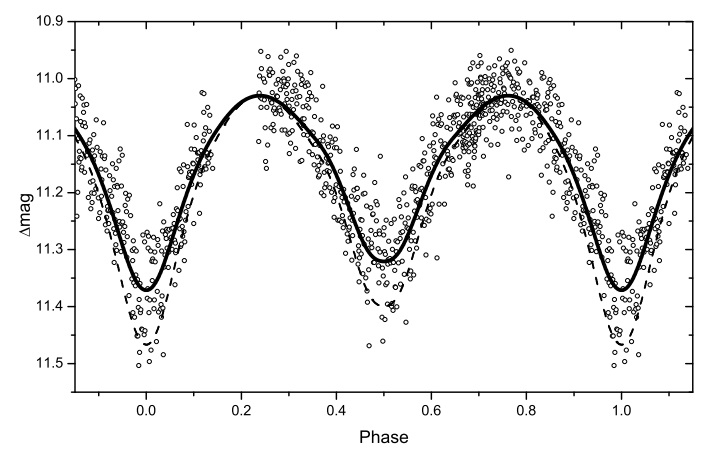

Last year, LUT was used by a team of researchers from the Chinese Academy of Sciences, led by Xiao Zhou, to obtain light curves of numerous eclipsing binaries and V921 Her was one of them. These observations provided important new information about the physical properties of this binary system.
V921 Her was observed continuously in the ultraviolet band by LUT on Feb. 2, 2015.
"Using the least-squares method, we obtained two times of light minimum through the light curve observed," the astronomers wrote in the paper.
According to the study, the mass of the primary star was calculated to be around 1.8 solar masses and its radius is about two and a half times greater than the radius of the sun. The secondary star is much smaller, having only 0.4 solar masses and approximately 1.3 solar radii. The temperature difference between its two components was calculated to be about 700 K, which indicates that V921 Her is a poor thermal contact binary system. The scientists also estimated that the system has a quite long period, which is about 0.88 days.
Moreover, the researchers found that a possible third component could exist around the binary system. They estimated that this newly found object's period should equal ten years.
"The sinusoidal term reveals a cyclic period change with a period of 10.2 years and an amplitude of 0.00516 days. (…) Our solutions conclude that V921 Her is an early type marginal contact binary system with an additional close-in component," the paper reads.
This is in accordance with previous research stating that most overcontact binaries exist in multiple systems.
The team also revealed that the luminosity of the third component is nearly twice of the luminosity of the secondary star. Therefore, they assume that it is a stellar component that contributes about 19 percent of the total luminosity in the triple system.
"It is supposed that the presence of a third component has played an important role in the formation and evolution of V921 Her by removing angular momentum from the central binary system during the early dynamical interaction," the researchers noted.
The scientists concluded that V921 Her is under the key evolutionary stage predicted by the thermal relaxation oscillation theory, which may evolve into a contact binary system. However, more photometric and spectroscopic observations are still needed in the future to confirm this hypothesis. The team noted that this object will be monitored over a long period. (Phys.org)

86-10-68597521 (day)
86-10-68597289 (night)

52 Sanlihe Rd., Xicheng District,
Beijing, China (100864)

